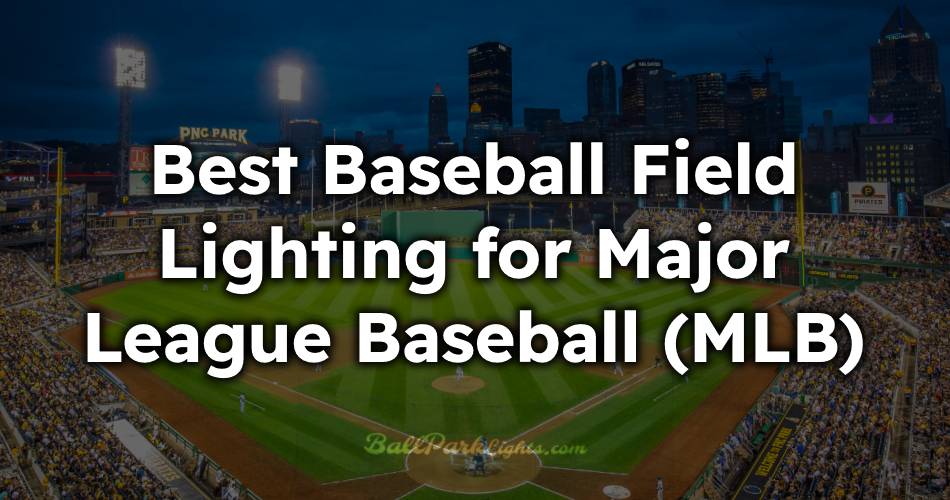Major League Baseball (MLB) games are iconic, bringing together fans of all ages to enjoy the thrill of the game. Central to this experience is the environment created by stadium lighting. The right lighting not only enhances the visibility of the players and the ball but also sets the mood for the entire event, making it essential for teams to invest in high-quality lighting systems.
| Products | Descriptions |
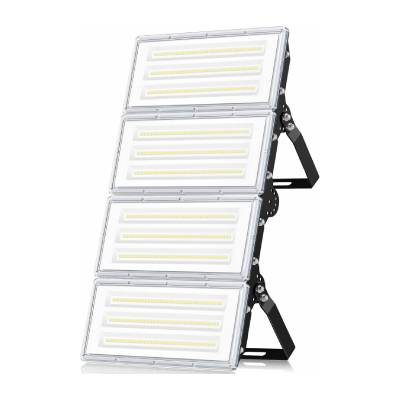 |
This powerful LED stadium light is designed for MLB baseball fields, offering high brightness with multiple adjustable light modules that provide wide coverage, ensuring optimal illumination for large spaces. It delivers bright, shadow-free lighting with a wide beam angle, perfect for outdoor arenas. With an IP67 waterproof rating and durable aluminum construction, it’s built to withstand tough weather conditions, reducing maintenance needs. Easy to install, the light comes with an adjustable bracket for versatile placement on ceilings, walls, or rooftops, making it ideal for professional sports venues. |
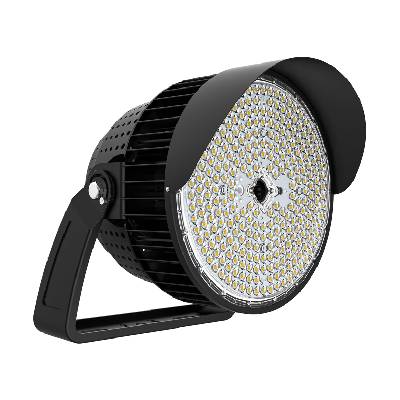 |
This advanced LED sports light is specifically designed for MLB baseball fields, delivering superior brightness and energy efficiency with a wide beam angle. It replaces traditional metal halide lights and provides crisp white light, ideal for professional-level photo and video capture. The dimmable feature allows for customizable lighting while minimizing energy use. Built to withstand tough outdoor conditions, its waterproof and durable design ensures reliable performance in any weather. With a long lifespan and enhanced heat dissipation, it offers consistent, high-intensity lighting for extended use, backed by a comprehensive warranty for peace of mind. |
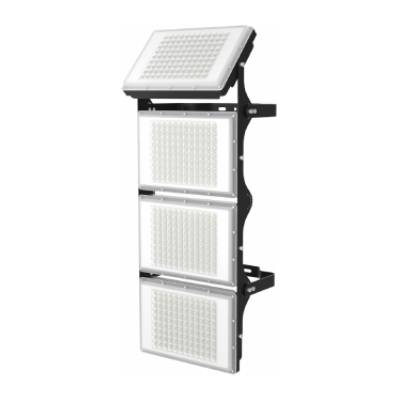 |
This high-performance LED stadium light is designed specifically for illuminating MLB baseball fields, featuring exceptional brightness that far surpasses traditional bulbs while also saving on energy costs. Its adjustable design allows for flexible installation, providing wide coverage for large outdoor spaces. Built with robust die-cast aluminum housing and a shock-resistant lens, it ensures excellent heat dissipation and durability in tough outdoor conditions. With a long lifespan and waterproof protection, this light is perfect for year-round use and comes with a solid warranty for added peace of mind.
|
Table of Contents
ToggleVarieties of Baseball Field Lighting
When evaluating lighting options for baseball fields, teams have several types to consider. Each comes with its own characteristics, benefits, and challenges that can impact gameplay and fan enjoyment.
| Lighting Type | Power Consumption (Watts) | Lifespan (Hours) | Brightness (Lux) | Warm-Up Time | Color Rendering |
|---|---|---|---|---|---|
| LED Lighting | 200 – 400 | >100,000 | 1,000 – 3,000 (up to 3,000 for televised events) | Instant-on | Excellent (high CRI) |
| Metal Halide Lighting | 400 – 1,000 | 15,000 – 20,000 | 1,000 – 2,500 | 5 – 15 minutes | Good (natural daylight) |
| High-Pressure Sodium | 250 – 400 | ~24,000 | Varies (less effective at dusk) | N/A | Poor (distorted colors) |
LED Lighting
LED (Light Emitting Diode) lighting has surged in popularity over the past decade and is now a leading choice among MLB teams. One of the primary reasons for this shift is the impressive energy efficiency of LED systems. LEDs consume significantly less electricity than traditional lighting. For instance, while metal halide lights consume about 400-1000 watts, LED lights of equivalent brightness can use as little as 200-400 watts. This substantial reduction translates to operational costs savings of up to 50% or more.
Furthermore, the lifespan of LED lights often exceeds 100,000 hours, minimizing the need for replacements and reducing maintenance costs. This durability is particularly advantageous for stadiums, where maintaining lighting quality is essential for both safety and gameplay. For example, if a stadium replaces its metal halide lights every 15,000 to 20,000 hours, switching to LED could allow a facility to operate for over five times longer before requiring new fixtures. With fewer replacements required, teams can allocate resources elsewhere, such as player development or fan experience enhancements.
Brightness and Clarity
Brightness is another feature of LED lighting. These fixtures can produce high lumen output, providing excellent illumination on the field. Most MLB stadiums require illumination levels of 1,000 to 2,500 lux for regular games and up to 3,000 lux for televised events. LED lights can achieve these levels efficiently, ensuring players can see the ball clearly and react quickly to plays. Fans in the stands also benefit from high-quality lighting, enhancing their viewing experience and allowing them to follow the game closely.
One distinctive feature of LED lights is their instant-on capability. Unlike traditional fixtures that require a warm-up period, LEDs illuminate to full brightness immediately. This capability can be especially helpful during player introductions or pre-game ceremonies, ensuring that the atmosphere is vibrant right from the start.
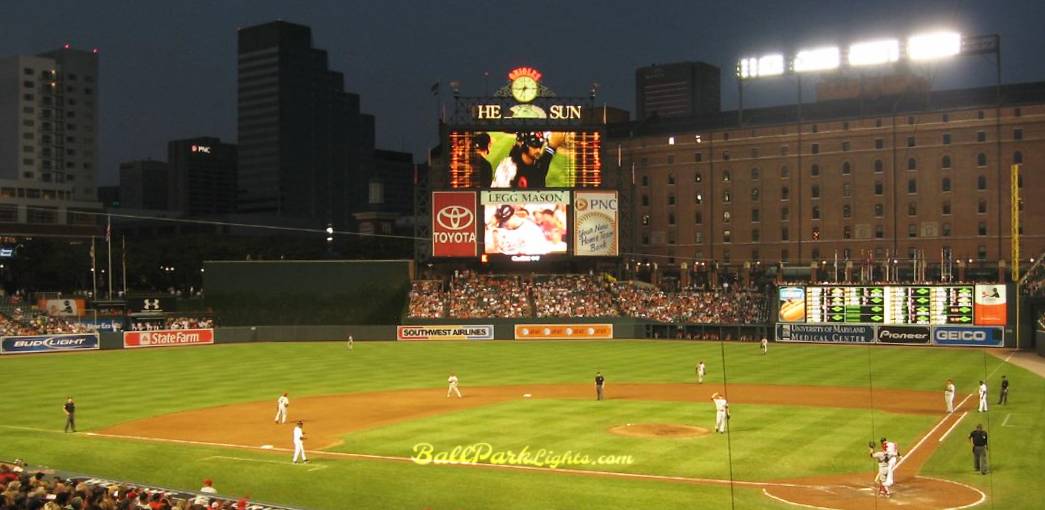
Metal Halide Lighting
Metal halide lighting has long been a staple in sports lighting and remains a common choice for many MLB stadiums. These fixtures produce a bright, white light that closely resembles natural daylight. This characteristic can enhance visibility for players and help reduce eye strain, allowing them to see the ball more clearly.
While metal halide lights provide excellent illumination, they come with some downsides. One of the most notable is their shorter lifespan compared to LEDs. Typically, metal halide fixtures last around 15,000 to 20,000 hours, which can lead to more frequent replacements and increased maintenance costs. For teams that prioritize long-term savings, this can be a significant consideration.
Another limitation of metal halide lighting is the warm-up time required to reach full brightness, which can be anywhere from 5 to 15 minutes. This can be an inconvenience for teams, particularly if the lights are turned on shortly before a game begins. Fans may find themselves waiting for the lights to come up, detracting from the overall experience. Despite these drawbacks, metal halide lighting remains a viable option, especially for teams operating within a tighter budget.
High-Pressure Sodium Lighting
High-pressure sodium (HPS) lighting is another traditional option that has been used in various outdoor venues. These fixtures produce a distinct yellowish-orange light that can create a unique atmosphere. HPS lights are known for their energy efficiency and ability to illuminate large areas, making them suitable for extensive playing fields. They typically consume about 250 to 400 watts for the average fixture, making them a cost-effective option for certain applications.
However, HPS lights have notable limitations. Their color rendering capabilities are limited, which can distort the appearance of the baseball against the field. Players may struggle to see the ball clearly, particularly at dusk or during twilight games. Additionally, while HPS fixtures are relatively energy-efficient, their lifespan typically ranges around 24,000 hours, which is shorter than that of LED lights. This limitation can lead teams to consider more advanced lighting technologies that offer better performance.
Important Criteria for Selecting Baseball Field Illumination
Choosing the right lighting system for a baseball field involves careful consideration of several factors that can influence performance, safety, and overall enjoyment.
Brightness and Lux Levels
Brightness is one of the elements of any lighting system. Measured in lux, this metric indicates the amount of light falling on a specific area. For MLB games, a minimum lux level of 1,000 to 2,000 is generally recommended to ensure that players can see the ball clearly. However, for televised games, higher lux levels may be necessary to meet broadcasting standards, ensuring that viewers at home can enjoy a clear and engaging visual experience.
Achieving the correct lux levels can impact player performance. Poor lighting can lead to misjudgments and errors, which can be especially detrimental during crucial game moments. For spectators, adequate lighting is vital for following the action and enjoying the experience. Striking a balance that caters to both players and fans is essential for maximizing the enjoyment of the game.
Uniformity of Light Distribution
Uniform light distribution is another factor to consider when selecting lighting for baseball fields. Inconsistent lighting can create shadows and glare, negatively affecting visibility. A well-designed lighting system should ensure that the entire field is illuminated evenly, minimizing dark spots and bright patches that can distract players and fans alike.
The height and angle of the lights can be adjusted to create an optimal distribution pattern. By strategically positioning lights around the field, teams can ensure that every area is adequately illuminated. Additionally, using high-quality fixtures designed to minimize glare can enhance the overall experience for players and fans alike. Ensuring uniform lighting helps maintain the integrity of the game and allows players to perform at their best.
Energy Efficiency and Cost Considerations
In an era where sustainability is gaining increasing attention, energy efficiency plays a vital role in lighting selection. Many MLB teams are now prioritizing environmentally friendly solutions that reduce energy consumption and operational costs. LED lighting systems are often favored for their low energy consumption, which can lead to substantial savings on electricity bills. These savings can help offset the initial investment in lighting systems, making LEDs an attractive option for teams looking to manage their budgets effectively.
Traditional lighting systems may have lower initial costs but can lead to higher expenses over time due to frequent replacements and higher energy use. Analyzing the total cost of ownership over the lifespan of the fixtures can provide valuable insights into the most economical choice for a stadium.
Installation and Safety Standards
The installation process and adherence to safety standards are considerations in selecting a lighting system. MLB stadiums must comply with specific regulations regarding lighting design and installation to ensure player and spectator safety. Professional installation is recommended to guarantee that fixtures are securely mounted and positioned correctly, minimizing hazards during gameplay.
Proper installation also helps maximize the effectiveness of the lighting system. Lighting that is improperly installed can lead to glare, shadows, or dark spots, impacting visibility for both players and fans. By working with experienced lighting professionals, teams can ensure that their lighting systems meet MLB standards while providing optimal performance.
Advancements in Baseball Field Lighting
As technology advances, innovations in baseball field lighting continue to emerge, enhancing the overall experience for players and fans alike. New lighting technologies and systems are transforming how games are played and viewed, offering exciting possibilities for the sport.
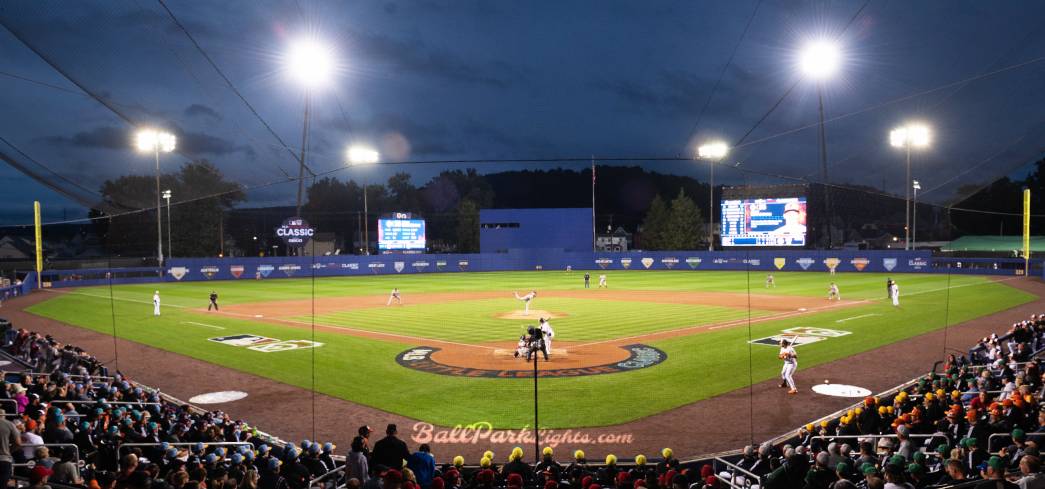
Smart Lighting Systems
Smart lighting systems represent a leap forward in the realm of sports lighting. These systems utilize advanced technology to provide dynamic lighting capabilities, allowing stadium operators to adjust brightness levels and colors based on specific needs. For instance, during pre-game ceremonies or special events, lights can be programmed to create stunning visual effects, enhancing the atmosphere for fans.
Furthermore, smart lighting can be integrated with game analytics and player performance data. This integration enables stadium operators to optimize lighting conditions based on real-time information, ensuring that players always have the best visibility possible. Smart systems can adjust lighting in response to environmental conditions, such as changes in daylight, ensuring consistent illumination throughout the game.
Another benefit of smart lighting is its ability to reduce energy consumption. By using sensors to detect occupancy and natural light levels, smart systems can adjust the lighting accordingly. This not only conserves energy but also helps teams meet sustainability goals. As these technologies become more sophisticated, smart lighting systems are likely to play an increasingly vital role in modern MLB stadiums.
Integration with Broadcast Technology
The relationship between baseball field lighting and broadcast technology has grown increasingly intertwined. As television and streaming services continue to dominate the way fans consume sports, stadium lighting systems must adapt to meet the demands of high-definition broadcasts. Modern lighting designs can enhance the viewing experience by reducing glare on screens and providing consistent illumination that captures the action effectively.
Innovative lighting technologies can also enhance the aesthetics of broadcasts. For example, lights that can change color or intensity during key moments of a game can create a more engaging visual experience for viewers at home. This integration of lighting and broadcast technology reflects the evolving landscape of sports entertainment, where the fan experience extends beyond the stadium itself.
Furthermore, lighting effects can be choreographed with game events, creating a dynamic visual spectacle. For example, during a home run or a walk-off win, the lighting can change dramatically to celebrate the moment. These enhancements not only elevate the live experience for fans at the stadium but also create memorable moments for those watching from home.
Sustainability Initiatives
With a growing emphasis on environmental responsibility, many MLB teams are exploring sustainable lighting solutions. LED systems are inherently more environmentally friendly due to their lower energy consumption and longer lifespan. By switching to LEDs, teams can reduce their carbon footprint and contribute to broader sustainability efforts.
Additionally, some teams are incorporating solar power into their lighting systems, harnessing renewable energy to power their stadiums. This approach not only decreases dependence on non-renewable resources but also aligns with the values of many fans who prioritize eco-friendly practices. By investing in sustainable lighting solutions, teams can demonstrate their commitment to protecting the environment while also enhancing their brand image.
Beyond the direct benefits of sustainability, teams can engage fans through educational initiatives and awareness campaigns. By showcasing their efforts to reduce energy consumption and minimize waste, teams can foster a sense of community among fans who share similar values. This connection can enhance loyalty and support for the team, creating a positive cycle that benefits both the organization and its supporters.
Advanced Control Systems
Advanced control systems are another innovation shaping the future of baseball field lighting. These systems allow for precise control over lighting fixtures, enabling teams to customize lighting settings for different situations. For instance, during practice sessions, teams can adjust the lighting to simulate game conditions, helping players acclimate to the environment they will face during games.
Moreover, these control systems can be integrated with event scheduling software, ensuring that lighting is optimized for each game or event. This capability can streamline operations, allowing teams to focus on other aspects of game preparation and fan engagement. By automating lighting adjustments based on predetermined criteria, teams can ensure consistent performance while minimizing manual intervention.
Another benefit of advanced control systems is their ability to support remote operation. Stadium operators can manage lighting from anywhere, allowing for greater flexibility and responsiveness. In the event of a last-minute scheduling change or an unexpected weather condition, operators can quickly adjust lighting to maintain optimal conditions for players and fans.
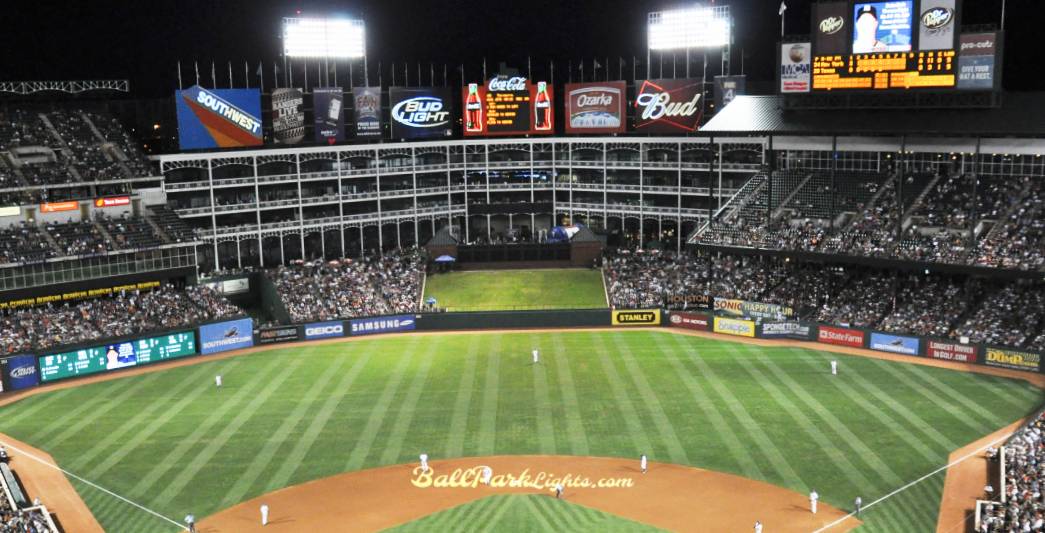
The Impact of Lighting on Improving Fan Experience
A well-lit stadium creates a welcoming atmosphere, enhancing the enjoyment of the event. From pre-game festivities to post-game celebrations, lighting sets the tone for the entire experience.
Pre-Game Atmosphere
Before the first pitch, the atmosphere in a stadium is electric, and lighting contributes to this excitement. Teams often use dramatic lighting effects during player introductions, showcasing the athletes and building anticipation among fans. Colorful light displays, spotlights, and synchronized effects create a memorable pre-game experience that captivates attendees.
Furthermore, during special events, such as fireworks shows or themed nights, lighting can enhance the spectacle. Creative lighting designs can draw fans’ attention and make these moments truly unforgettable. By investing in high-quality lighting, teams can elevate the pre-game experience and engage fans right from the start.
Game Time Engagement
Proper illumination ensures that spectators can clearly see the action on the field, enhancing their enjoyment. The use of LED lights allows for dynamic color changes during pivotal moments, such as home runs or game-winning plays, creating excitement and enthusiasm among fans.
In addition to enhancing visibility, lighting can also influence crowd behavior. A well-lit environment encourages fans to cheer and engage with the game actively. Conversely, poorly lit areas can lead to disengagement, detracting from the overall experience. By providing a visually appealing atmosphere, teams can foster a sense of community among fans, encouraging them to share in the excitement of the game.
Post-Game Celebrations
Post-game celebrations are another opportunity for teams to utilize lighting to create a memorable experience. Whether it’s a fireworks show, player awards ceremony, or a community event, lighting plays a crucial role in setting the tone for these festivities. By employing creative lighting designs and effects, teams can enhance the overall atmosphere and leave fans with lasting memories.
Teams can also incorporate lighting into promotional events, such as theme nights or charity fundraisers. By using dynamic lighting displays, teams can create a unique experience that resonates with fans and encourages them to return for future games. This connection between lighting and fan engagement can strengthen the bond between teams and their supporters, contributing to a loyal fanbase.
Conclusion
Selecting the best baseball field lighting for Major League Baseball involves understanding the various types of lighting available, evaluating key factors in choosing a system, and exploring recent innovations. The right lighting can significantly enhance the experience for players and fans alike, ensuring optimal visibility and creating an exciting atmosphere.
As teams continue to invest in modern lighting solutions, the future of baseball field lighting looks bright. With advancements in technology, smart systems, and a commitment to sustainability, MLB stadiums are poised to provide unforgettable experiences for generations to come. By embracing these innovations, teams can enhance gameplay, engage fans, and contribute to a more sustainable future for the sport.

